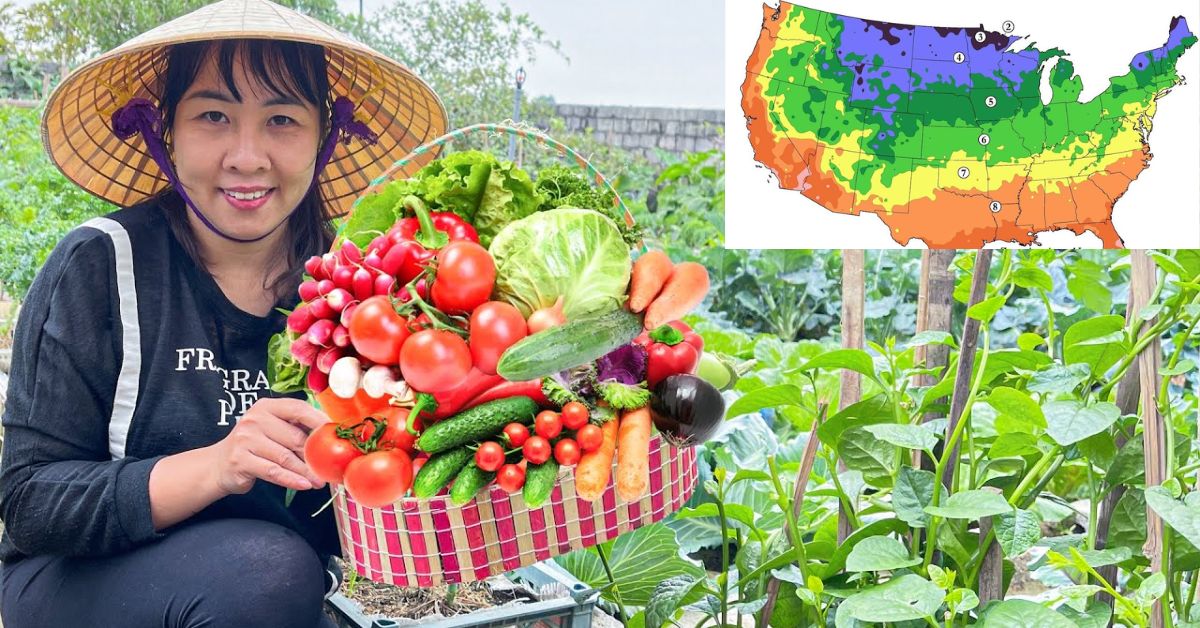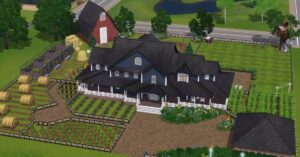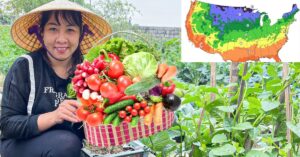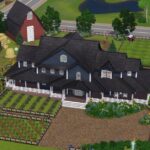My gardening zone refers to the specific region I garden in, classified by the minimum winter temperatures typically between 0-10 degrees Fahrenheit according to the USDA map. This helps determine which flowers, vegetables, and trees thrive best outdoors in an area with our climate conditions to cultivate.
Have you ever wondered what types of plants will flourish in your backyard? Understanding your specific gardening zone is key to this. What Is My Gardening Zone helps identify which flowers, vegetables and other greenery are most suitable for my climate.
Determining my gardening zone allows me to select plants with the highest chance of thriving. What Is My Gardening Zone signifies the minimum winter temperatures that classify my region. Knowing this informs what flowers, vegetables and trees best suit my climate.
Understanding the Map
The USDA created zones to help gardeners know what grows best in their location. The zones are based on the average annual minimum winter temperature for an area. There are 13 zones total, with zone 1 being the coldest and zone 13 the warmest. By learning your zone, you can select plants suited for the climate.
The zoning map is a useful tool for any gardener. It provides guidelines for what perennials, annuals, trees, and shrubs can overwinter outdoors. Following the zone recommendations helps avoid disappointment from planting mistakes. With the map as a guide, gardeners save time and money on improper choices each year.
What the USDA zoning map shows
The zoning map divides North America into 13 zones grouped by temperature. This shows the average annual minimum winter temperatures for the past 30 years. The map evaluates how cold areas typically get during the coldest periods. It acts as a guide for plants that can tolerate typical lows in each region.
Areas within each zone may have microclimates that are slightly warmer or colder. Other site factors also influence plant growth. But the map gives a general idea of what thrives throughout wide geographic areas. It helps narrow choices to ones suited to the climate conditions.
How winter temperatures create zones
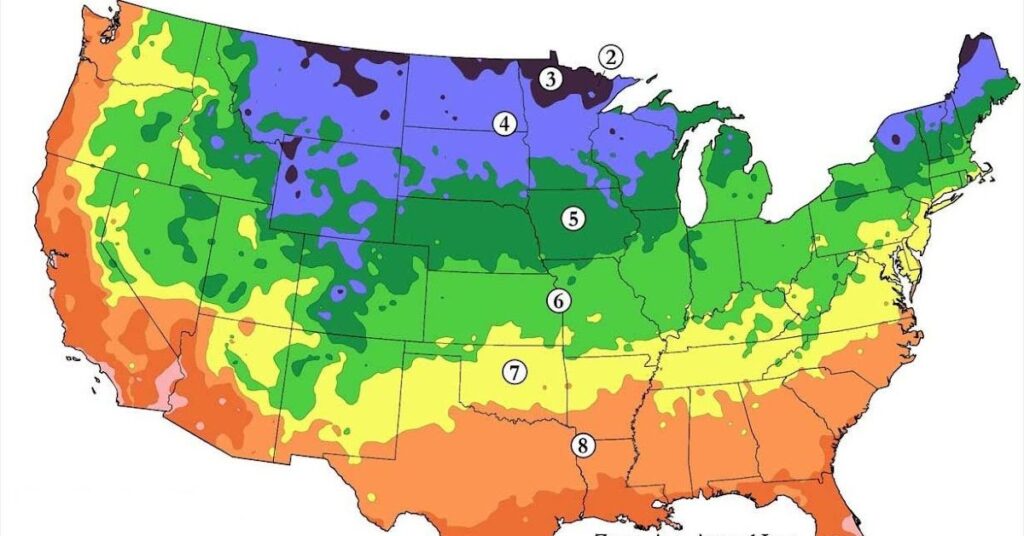
To make the map, the USDA recorded the lowest minimum winter temperatures at weather stations. They identified transition lines between zones with similar minimums. The coldest zones have the lowest minimum temperatures below 0°F while the warmest zones have higher minimums.
Plants are given hardiness ratings based on field testing how cold they can get and still survive during typical winters. Their rating guides gardeners to match choices to zones where those temperatures are at normal lows. This identifies where plants can be reliably perennial.
Benefits of identifying your zone number
Knowing your zone makes shopping and planning simpler. You don’t waste money on plants unlikely to survive your winters. Identification is the first step to having a beautiful, productive garden you can enjoy for years.
The zone system also helps gardeners set realistic expectations. You’ll know if a gorgeous flowering shrub shown on a Zone 8 garden TV show will truly thrive in your Zone 5 climate. Identifying your number empowers you to garden with confidence each season.
Finding Your Hardiness
The first step is finding your location on the interactive zoning map online. Just enter your address to pinpoint your zone. You can also look at zones by the city if unsure of exact site conditions.
Property lines don’t always match zones. Microclimates from hills, buildings, or bodies of water can skew temperatures in one zone warmer or colder. Observe your spot’s specific features that may modify usual conditions.
Armed with your zone number, you can make smart choices tailored for success. Select plants rated equal to or lower than your zone that will reliably come back year after year. Avoid being too ambitious with marginally rated choices as well.
Locating your property on the map
The best way is to enter your full physical address on the National Arbor Day Foundation website map. This pinpoints your home using its database of street locations.
If unsure of the address, search for your city and state. Check that the mapped zone aligns with conditions at your site, as microclimates can vary the typical temperature within a few miles. You can also search by zip code if other methods don’t work.
Factors that decide zone lines
Zone lines consider average annual minimum winter temperature records. But they aren’t precise, as other site factors like soil, sunlight, and wind can modify conditions slightly. Hills may skew zones one number higher or lower in some locations.
Using your zone to plant smart
Match plants to your identified zone for healthy, carefree gardening. Consider also how microclimates, like reflected heat off a wall, may skew your space one half-zone differently. With your number in mind, choose tried and true varieties suited to thrive where you garden.
Choosing Cold Warriors
Many ornamental cabbages and kale thrive despite light frosts, making them zone pushers. Their decorative leaves stand out in the winter landscape and many reseed for the next season.
For fall color and winter interest, try ornamental grasses that stay standing after frost. Miscanthus, Panicum, and Molinia offer beautiful variegated or purple-tinged foliage. They persist through light freezes.
Selecting plants tolerant of frost
Hardy geraniums, catmint and coral bells handle light frosts with aplomb and keep blooming until temperatures drop more severely. Their colorful flowers provide cheer through early fall freezes.
Options that can take below freezing
Some perennials like creeping phlox and sedums offer beautiful foliage and flowers that persist after temperatures plummet well below freezing. Their sturdy structure withstands heavy snowfalls as well.
Beating Old Man Winter’s wrath
Evergreen shrubs like hollies, boxwoods and euonymus provide year-round greenery regardless of cold spells. Their dense foliage withstands ice and snow safely through the winter.
Picking Seasonal Success
Many lettuce, kale and spinach thrive through summer heat and keep producing leaves. Plant them at various intervals for continuous harvests through fall.
Flowers that will flourish when warm
Zinnias, marigolds, and sunflowers add summer color and attract pollinators even during heat waves. Their durable blooms withstand rainfall and heat without faltering until frost halts growth.
Maximizing growing seasons
Stagger plantings of warm weather crops to extend the harvesting timeline. Quick maturing choices like radishes or greens allow multiple successive plantings throughout the summer months.
Zoning Beyond Basics
Microclimates near structures like walls can be one zone warmer due to reflected and held heat. Factor in any unique spaces that may alter the zone lines.
Factors other than cold that impact zones
Soil type also affects suitable choices, as some plants prefer richer or drier conditions. Hardiness requirements refer to normal garden loam so amend as needed to suit specific preferences.
Microclimates on your property

Nearby pavement or buildings could skew your zone half a number warmer on the north side that absorbs daytime heat. Note any variations from usual temperatures across your site.
Adjusting to unique terrain features
Sites near bodies of water may have higher humidity. East or west-facing slopes have different lights and will warm or cool slightly compared to the flat ground in your zone. Assess impacts when selecting plants accordingly.
Borderline Possibilities
Examine the descriptions for plants rated one zone higher than where you garden. With careful siting and mulch protection, some may successfully overwinter.
Plants that straddle your zone
Try trees and shrubs tagged as zone 5-7 if you are in the higher half of zone 5. Their extra insulating snow cover or leaves may help them survive marginal winters in colder spots.
Working the shoulders of temperature lines
Experiment with a few marginal selections each year using techniques like cloches or frost cloths. Observe which varieties thrive versus struggling to tailor future choices.
Techniques like mulch for edgy choices
Apply generous mulch rings in the fall for half-hardy perennials rated one zone too high. Their thick cover insulates roots through extreme cold spells and pushes their limits.
Changing Climate Considerations
Warmer winters may gradually shift zones over time by 1⁄2 to 1 full zone. Monitor changes to microclimates too as conditions transition with larger trends.
How warming trends adjust zones
Zone expansion is fueled by fewer very cold days than previously defined boundaries. Adjust plant varieties gradually based on real observed hardiness in your area versus strict zone ratings.
Signs your zone is transitioning
Notice if formerly marginal perennials or shrubs survive winters with less snow cover. This indicates it may be safe now to try one-zone higher selections with climate change.
Adapting selections overtime
Keep notes on which plantings succeed versus fail over the years. Gradually replace unsuccessful ones with similar choices one zone more heat tolerant to evolve with shifting conditions at your location.
Comparing To Neighbors
Learn from others’ climate-matched successes nearby. Tour their gardens for more zone-perfect ideas to try at your site too for gorgeous colors year-round.
Examining nearby zone varieties
Neighbor gardens in an identical zone provide more inspiration for reliable options suited to your climate. Speak with them to get details on which specific cultivars flourish for ideas tailored to conditions.
Learning regional planting specifics
Micro variations exist even between nearby zones. Neighbors can advise on native plants, ideal growing seasons, and challenges like disease pressure in each location for an edge when selecting.
Networking plant prowess wisdom
Discussing successes and failures with other experienced gardeners increases long-term planting knowledge. Collaborate on pushing zone limits together for the best results tailored exactly to conditions.
Ongoing Zone Education
As zones shift with climate change, continuing self-education ensures maximizing each season. The more you learn, the better equipped you’ll be to adapt garden plans effectively.
Resources that expand zoning knowledge
Explore extension websites, public libraries, and botanic gardens. Joining local gardening groups also deepens understanding through shared tips tried right in your conditions over many years.
Conclusion
Understanding What Is My Gardening Zone helps pick the best plants. Using your zone number guides choose flowers, veggies, and trees that thrive. With the right choices, gardens will look colorful and stay healthy year after year.
What Is My Gardening Zone gives simple climate info for where you garden. Find your zone to select varieties used to the weather. Gardens will flourish with greenery that loves growing in your conditions. Knowing your zone makes planning fun and easy.
